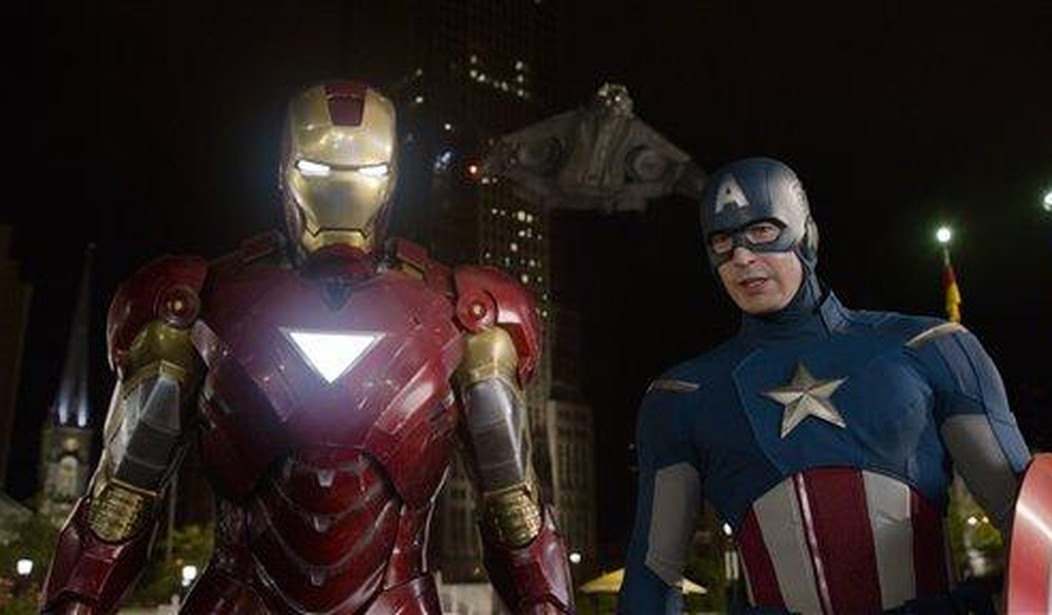“You couldn’t live with your own failure. Where did that bring you? Back to me.”
-Thanos Robert Downey Jr. to Bob Iger (probably)
Like a mischarging arc reactor (Nerd-to-English Translation: That’s what powers Iron Man’s suit, duh.) tossed into a pool of calm, tranquil waters before suddenly – and very violently – erupting, triggering waves of repercussions that shook pop culture to its core, the Marvel Cinematic Universe began with an idea: (Apologies to Nick Fury) Bring together a group of remarkable people to see if they could become something more… profitable. To see if they could work together when we needed them to, to capture a box office that we never could.
It began with the release of “Iron Man” in 2008, featuring the origin story of Tony Stark (Robert Downey Jr.) becoming Iron Man, and reached its fever-pitch in 2019 with “Avengers: Endgame,” where (Spoiler Alert) Tony Stark sacrifices himself to stop the evil alien Thanos and save the universe.
(So, it’s a lot like “Hamlet,” but with way more talking trees, wicked-cool laser guns, and amorphic raccoons.)
If necessity is the mother’s milk of invention, then the MCU was born in a vast sea of lactose: Unable to secure the film rights to the superheroes well-known to the masses – Spiderman, Wolverine, Blade, the rest of the X-Men; characters like Superman, Batman, and Wonder Woman were locked-up by DC, a rival company – Marvel developed an interwoven, overlapping shared cinematic “universe” populated by b-level superheroes: Captain America, Thor, Black Widow, Hawkeye, Hulk… and a rich, arrogant white industrialist who moonlights as Iron Man.
Not unlike Antman (who can get really, really tall and not just shrink, you know, guys. Hey, stop calling me a nerd.), the MCU grew and grew and grew. And as its presence swelled to Galactus-sized proportions, outside pressure on its creative direction grew as well: “Why is the Viking god Thor a white guy?! Hey, Black Widow, Hawkeye, Iron Man and Hulk are all white people, too! (Okay, maybe Hulk is sometimes green, but when he’s not green, he’s definitely white!) Something’s gotta change!”
And so, the MCU began to course-correct, replacing its original white-male-majority cast with something far more diverse:
The Asgardians (Viking gods) are now ruled by a minority woman, and Thor himself was replaced with Jane (until she died).
Hawkeye the archer was swapped with young Kate Bishop.
Captain America Steve Rogers was swapped for Captain America Sam Wilson.
Iron Man was replaced with Riri Williams.
Bruce Banner’s Hulk was given a backseat to She-Hulk.
Now, there’s absolutely nothing wrong with the introduction of new characters – including minority characters – in a sprawling, episodic setting like the MCU. In a fictional universe with space monsters, weird aliens, multiverse adventures, and psychic powers, there’s certainly room for all ethnicities. But the original magic of the MCU was the appeal of these specific characters: They were fun, goofy, interesting, and heroic. Yes, they were (mostly) white, but they were extraordinarily colorful, too.
The MCU decided to force-feed us new characters that were the exact opposite: They weren’t white, nor were they colorful. They seemed to exist solely to fulfil a PC request.
It’s the standard liberal infiltration technique: Identify something big in pop culture, shame the participants until you’re granted a seat at the table, push your agenda until it’s no longer profitable… and when it dies, just move on to the next big thing.
So, after Robert Downey Jr. dusted that lousy, no-good Thanos, the MCU searched for a new Big Bad Guy. For a brief while, they thought they found their foil: A multiverse-hopping baddie named Kang, played by black actor Jonathan Majors. He first appeared on the Disney+ TV series “Loki” and was Antman’s adversary in “Antman and the Wasp: Quantumania” (where the male character of Antman was being phased out and replaced by his daughter, Cassie Lang, by the way).
Alas, “Quantumania” was a quantum-bomb. It lost money at the box office – something unheard of for an MCU film! – and Kang actor Jonathon Majors was later fired from Disney after being found guilty on a pair of domestic violence charges.
Disney and the MCU were reeling. Their films were suddenly unprofitable; their TV shows were disappointing fans (the less we can say about “Secret Invasion,” the better); and what was once the biggest thing in pop culture had become hopelessly passé.
They were desperate. “And in their desperation, they turned to a man they didn’t fully understand.” (Oops, that quote was actually from “Batman”, not the MCU, sorry.) The entire franchise was teetering towards total collapse, replicating the same fall – for the same reason! – as what happened to “Star Wars.”
And now, Disney CEO Bob Iger stood at a fork in the road; the choice was entirely his. He could either double down on the same path that led Marvel and Star War astray, or he could course-correct. After all, Disney might adore all the colors in its inclusionary rainbow, but we’ve always suspected that its favorite was green (and not just for the Hulk).
This time, Iger didn’t screw around.
The MCU didn’t opt for a diversity hire. They didn’t announce a radical new interpretation of Doctor Doom, where he’d be played by a transgender paraplegic Asian woman. Instead, they went back to the basics – and rehired the same man who launched the same franchise in the first place: Robert Downey Jr. is our new Doctor Doom.
If we bash Disney when they incinerate profits and shun conservatives to chase the woke agenda, we should also applaud them when they recognize their mistake and change courses. So, bravo. Sure, it might be inauthentic – but did you really expect anything less? Hey, lip-service is still service.
When the bottom line is the bottom line, the woke agenda just isn’t sustainable for a mainstream brand like Disney. If you want to stay in business, you have to appeal to non-liberals, too.
Therefore, to quote my favorite intergalactic warlord, Iger’s decision was… “inevitable.”










Join the conversation as a VIP Member